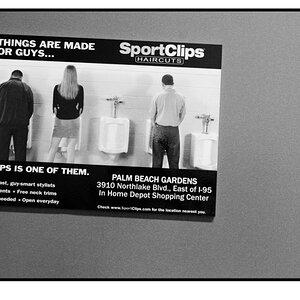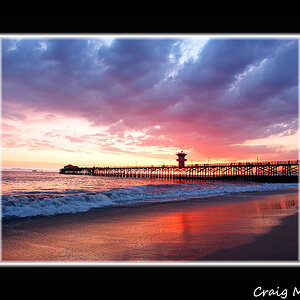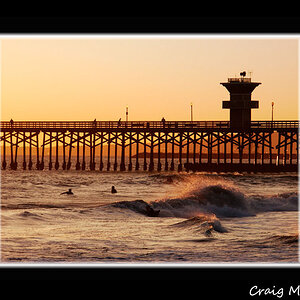Navigation
Install the app
How to install the app on iOS
Follow along with the video below to see how to install our site as a web app on your home screen.

Note: This feature currently requires accessing the site using the built-in Safari browser.
More options
You are using an out of date browser. It may not display this or other websites correctly.
You should upgrade or use an alternative browser.
You should upgrade or use an alternative browser.
Marvel Mystery Oil
- Thread starter limr
- Start date
- Joined
- Jun 9, 2013
- Messages
- 20,580
- Reaction score
- 12,709
- Website
- moderndinosaur.wordpress.com
- Can others edit my Photos
- Photos NOT OK to edit
A very nice image! I still have my old SX-70. Hmm. Where can I get that film? You have got me interested in shooting with it again!
Impossible Project film is available in a lot of places - I'm even starting to see it more often in brick-and-mortar stores. My suggestion is to buy it from The Film Photography Project (Film Photography Project | An Internet Radio Show & On-Line Resource for Film Shooters Worldwide). It's usually a few dollars cheaper than everywhere else (generally $25 and FPP sells it for $22 - still pricey, but I've gotten quite fond of it, and even when Amazon has it at the lower price, I prefer supporting FPP. Plus you get a cool sticker
If you do decide to give it a try, definitely get the frog tongue (which they don't have at FPP): Amazon.com : Impossible PRD2776 Frog Tongue for Folding SLR Cameras (Black) : Camera & Photo (This is the one for the folding SX-70.) Oh, and it's rated at 160 but practically speaking, I think it's a bit faster. If I'm shooting outdoors, I turn the exposure dial all the way to darken.
IP film is VERY sensitive to light for several minutes after exposure, so when it shoots out of the camera, you are essentially further exposing the emulsion, and if you're outdoors, you're almost sure to end up with a yellow, over-exposed image. The tongue made a HUGE difference. I still am really careful - after the print is ejected and while still under the frog tongue, I'll turn the camera over and press it against my body so I can slide the print out from under the frog tongue, keep it pressed face-down against my body, and slide it into a pocket or my camera bag to finish exposing (it takes a while. I usually peek at 30 minutes - it's close to the final image and it's much less sensitive at that point.)
It's definitely a process! And there's only 8 shots, so you really want to make them count. It might take a pack or two to figure out how your camera responds and what are good "IP shots." The trick is learning what kinds of subjects and lighting go well with the film characteristics.
As an Amazon Associate we earn from qualifying purchases.
pez
Been spending a lot of time on here!
- Joined
- May 29, 2008
- Messages
- 1,889
- Reaction score
- 1,587
- Location
- N Georgia
- Can others edit my Photos
- Photos OK to edit
Thanks, Leonore! Sounds like a fun project, and I'll check out the Frog Tongue as well. 
A very nice image! I still have my old SX-70. Hmm. Where can I get that film? You have got me interested in shooting with it again!
Impossible Project film is available in a lot of places - I'm even starting to see it more often in brick-and-mortar stores. My suggestion is to buy it from The Film Photography Project (Film Photography Project | An Internet Radio Show & On-Line Resource for Film Shooters Worldwide). It's usually a few dollars cheaper than everywhere else (generally $25 and FPP sells it for $22 - still pricey, but I've gotten quite fond of it, and even when Amazon has it at the lower price, I prefer supporting FPP. Plus you get a cool sticker)
If you do decide to give it a try, definitely get the frog tongue (which they don't have at FPP): Amazon.com : Impossible PRD2776 Frog Tongue for Folding SLR Cameras (Black) : Camera & Photo (This is the one for the folding SX-70.) Oh, and it's rated at 160 but practically speaking, I think it's a bit faster. If I'm shooting outdoors, I turn the exposure dial all the way to darken.
IP film is VERY sensitive to light for several minutes after exposure, so when it shoots out of the camera, you are essentially further exposing the emulsion, and if you're outdoors, you're almost sure to end up with a yellow, over-exposed image. The tongue made a HUGE difference. I still am really careful - after the print is ejected and while still under the frog tongue, I'll turn the camera over and press it against my body so I can slide the print out from under the frog tongue, keep it pressed face-down against my body, and slide it into a pocket or my camera bag to finish exposing (it takes a while. I usually peek at 30 minutes - it's close to the final image and it's much less sensitive at that point.)
It's definitely a process! And there's only 8 shots, so you really want to make them count. It might take a pack or two to figure out how your camera responds and what are good "IP shots." The trick is learning what kinds of subjects and lighting go well with the film characteristics.
As an Amazon Associate we earn from qualifying purchases.
- Joined
- Apr 9, 2009
- Messages
- 41,401
- Reaction score
- 5,706
- Location
- Iowa
- Website
- kharrodphotography.blogspot.com
- Can others edit my Photos
- Photos OK to edit
Neat photo with the Marvel Mystery Oil tin in the background.
WD-40 is mostly Stoddard solvent with about 15% by volume of light weight mineral oil.
Marvel Mystery Oil was created by the Marvel Carburetor Company after WWI.
Company owner Burt Pierce formulated Marvel Mystery Oil to clean and maintain carburetor jets.
My go-kart engines burn a mix of racing gasoline and castor oil. Castor makes the exhaust smell nice too.
Castor oil (a vegetable oil made from castor beans) provides better high-temperature lubrication than petroleum based oils do making it desirable as a lubricant in go-kart and other 2-cycle racing engines.
The castor oil lubricates the engine instead of having a separate engine oiling system, but the castor oil tends to form gums in a short time.
I rev my kart engines to 14,000 rpm.
Castor oil isn't inexpensive @ about $15 a quart. A gallon of my racing gas, with 80z of castor oil mix, runs me about $12 a gallon.
After racing each day I run my kart engines for a couple of minutes on a blend of gasoline and MMO (instead of castor oil) to clean out left over castor oil to minimize the formation of castor gum. That lets me get my kart engines rebuilt after 13 hours of run time instead of after 10 hours of run time.
WD-40 is mostly Stoddard solvent with about 15% by volume of light weight mineral oil.
Marvel Mystery Oil was created by the Marvel Carburetor Company after WWI.
Company owner Burt Pierce formulated Marvel Mystery Oil to clean and maintain carburetor jets.
My go-kart engines burn a mix of racing gasoline and castor oil. Castor makes the exhaust smell nice too.
Castor oil (a vegetable oil made from castor beans) provides better high-temperature lubrication than petroleum based oils do making it desirable as a lubricant in go-kart and other 2-cycle racing engines.
The castor oil lubricates the engine instead of having a separate engine oiling system, but the castor oil tends to form gums in a short time.
I rev my kart engines to 14,000 rpm.
Castor oil isn't inexpensive @ about $15 a quart. A gallon of my racing gas, with 80z of castor oil mix, runs me about $12 a gallon.
After racing each day I run my kart engines for a couple of minutes on a blend of gasoline and MMO (instead of castor oil) to clean out left over castor oil to minimize the formation of castor gum. That lets me get my kart engines rebuilt after 13 hours of run time instead of after 10 hours of run time.
- Joined
- Jun 9, 2013
- Messages
- 20,580
- Reaction score
- 12,709
- Website
- moderndinosaur.wordpress.com
- Can others edit my Photos
- Photos NOT OK to edit
Neat photo with the Marvel Mystery Oil tin in the background.
WD-40 is mostly Stoddard solvent with about 15% by volume of light weight mineral oil.
Marvel Mystery Oil was created by the Marvel Carburetor Company after WWI.
Company owner Burt Pierce formulated Marvel Mystery Oil to clean and maintain carburetor jets.
My go-kart engines burn a mix of racing gasoline and castor oil. Castor makes the exhaust smell nice too.
Castor oil (a vegetable oil made from castor beans) provides better high-temperature lubrication than petroleum based oils do making it desirable as a lubricant in go-kart and other 2-cycle racing engines.
The castor oil lubricates the engine instead of having a separate engine oiling system, but the castor oil tends to form gums in a short time.
I rev my kart engines to 14,000 rpm.
Castor oil isn't inexpensive @ about $15 a quart. A gallon of my racing gas, with 80z of castor oil mix, runs me about $12 a gallon.
After racing each day I run my kart engines for a couple of minutes on a blend of gasoline and MMO (instead of castor oil) to clean out left over castor oil to minimize the formation of castor gum. That lets me get my kart engines rebuilt after 13 hours of run time instead of after 10 hours of run time.
Go-karts are fun !
My father was a mechanic and I can't tell you how he used the Marvel Mystery Oil, but he always had a tin. I have a suspicion that it was what he put in all those oil cans. I always loved the name. Speaking of funny names, I'm reminded, too, of the massive container of Goop that he had to clean his hands after working in the garage all day. Even had the crank handle dispenser near the garage door.
I love reading about all the MMO stories
nycphotography
No longer a newbie, moving up!
- Joined
- Dec 7, 2012
- Messages
- 963
- Reaction score
- 261
- Can others edit my Photos
- Photos NOT OK to edit
If you go to estate auctions you can buy almost infinite amounts of old interesting more or less useless stuff on the cheap.
Braineack
Been spending a lot of time on here!
- Joined
- Jun 17, 2013
- Messages
- 13,214
- Reaction score
- 5,613
- Location
- NoVA
- Can others edit my Photos
- Photos OK to edit
After racing each day I run my kart engines for a couple of minutes on a blend of gasoline and MMO (instead of castor oil) to clean out left over castor oil to minimize the formation of castor gum. That lets me get my kart engines rebuilt after 13 hours of run time instead of after 10 hours of run time.
omg, you actually know how the product is supossed to be used!
Most reactions
-
 459
459 -
 288
288 -
 276
276 -
 261
261 -
 210
210 -
 196
196 -
 190
190 -
 186
186 -
 180
180 -
 173
173 -
 149
149 -
 134
134 -
 119
119 -
I
109
-
 90
90
Similar threads
- Replies
- 9
- Views
- 1K
- Replies
- 13
- Views
- 2K

![[No title]](/data/xfmg/thumbnail/32/32697-bccb29f21520b31443b92c054e608ca0.jpg?1619735600)
![[No title]](/data/xfmg/thumbnail/33/33352-15e8cd88072467dd938f6af96d0f15a3.jpg?1619735918)




![[No title]](/data/xfmg/thumbnail/37/37603-739c5d9b541a083a12f2f30e45ca2b7b.jpg?1619738147)

![[No title]](/data/xfmg/thumbnail/31/31012-f5e0c7cdea2f2c3e44737e3f61c2461a.jpg?1619734567)
![[No title]](/data/xfmg/thumbnail/33/33356-9cfc19255e84aab13c903f781a99cf9f.jpg?1619735920)

